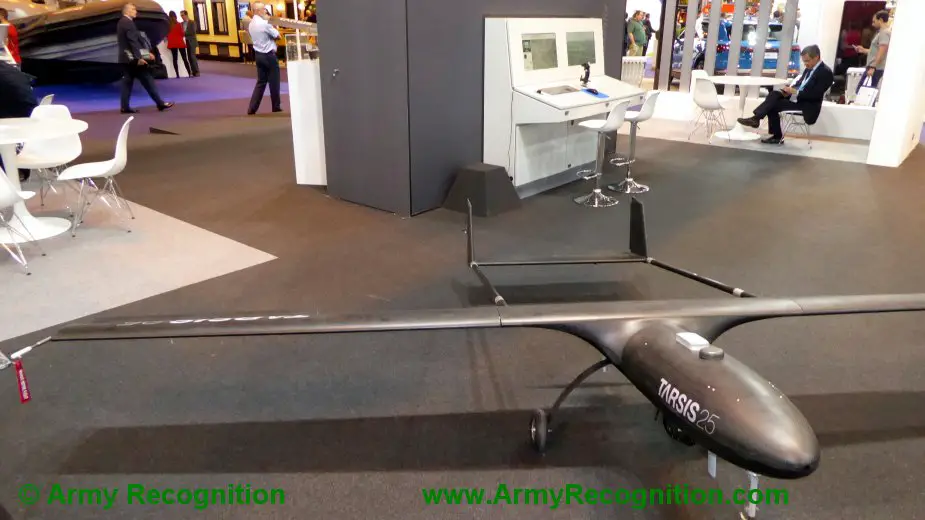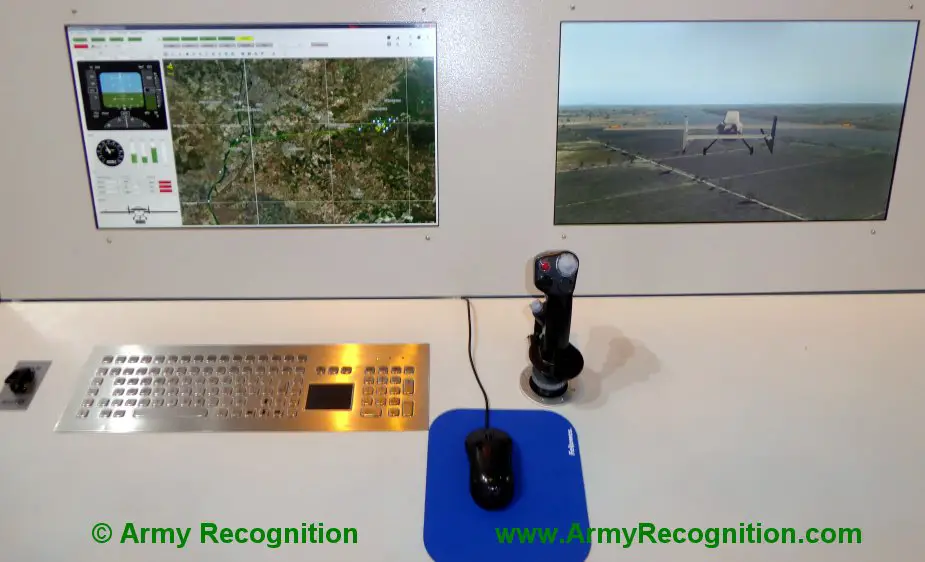Breaking news
FEINDEF 2019: AERTEC Solutions displays Tarsis remotely piloted aerial systems and flight simulator.
AERTEC Solutions displays its complete family of RPAS (Remotely Piloted Aerial Systems) called Tarsis, the fixed-wing unmanned aerial vehicles developed with 100% Spanish technology and designed to perform different missions thanks to its multiple configurations. The company also exposes its solutions on simulation environments for the training of RPAS crews and for the evaluation of complex missions.

AERTEC Tarsis 75 UAV (Picture source: Army Recognition)
AERTEC has recently been named by the European Defense Agency as a leading company in the development of a laser emitter technology to be used in on-board countermeasure systems against anti-air threats, such as RPAS self-protection. In this event, the first prototype of this solution completely made in Spain will be exhibited for the first time.
The Spanish technology firm also presents its latest developments in simulation environments for RPAS, which come to join its wide range of innovative solutions in the aerospace sector. AERTEC designs, reproduces and integrates different simulation environments in any space, taking into account the requirements and needs of the client. Fully customized solutions allow a simulated response with a very high degree of realism since they integrate their own autopilots like Hardware in the Loop (HIL) and all the necessary variables to simulate missions with different levels of complexity. These simulation environments are currently applied for crew training and, above all, for the evaluation and modification of highly complex missions.
At FEINDEF a valid simulation environment for RPAS Tarsis is shown, although its novelty lies in the fact that it can be configured for any type of RPAS system.

AERTEC Tarsis 25 UAV (Picture source: Army Recognition)
The family of TARSIS aerial platforms, manufactured in carbon fiber, allows different configurations and missions. It is a light tactical high-performance unmanned aircraft, designed for observation and surveillance applications for both civil and military. The company offers two operational solutions: the Tarsis 25 and the Tarsis 75, capable of operating in diverse weather conditions. The platforms are equipped with a primary nominal communications system, together with a secondary redundant system. The primary real-time video and data link has optional range configurations (40, 70 and 150 km). The secondary data link is connected by satellite and has an unlimited range. The frequency of communication can be adapted to local operating requirements. The Tarsis, which have their own design and technology, can be adapted and configured according to the required mission needs.
To date, Tarsis RPAS have reached some technological milestones. The Tarsis 75 has successfully completed automated operations from the sand. Take off, flight and landing have been carried out automatically. A type of operation for which there is no record in both Spain and Europe that other RPAS with characteristics similar to Tarsis have been successfully completed.
Additionally, these operations have been able to exceed a 3,000-meter altitude and 100 kilometers away, but the Tarsis can reach up to 150 kilometers of radio communications.

AERTEC flight simulator (Picture source: Army Recognition)
AERTEC Solutions also presents other innovations in guidance systems, navigation and control of unmanned aerial systems, as well as its ground control system (GCS), compatible with any other type of RPAS and with which demonstrations of interoperability with Command and Control Systems of the Spanish Armed Forces have been carried out. The company also has a Guidance, Navigation and control system (Autopilot) of its own design.

AERTEC flight simulator (Picture source: Army Recognition)

























